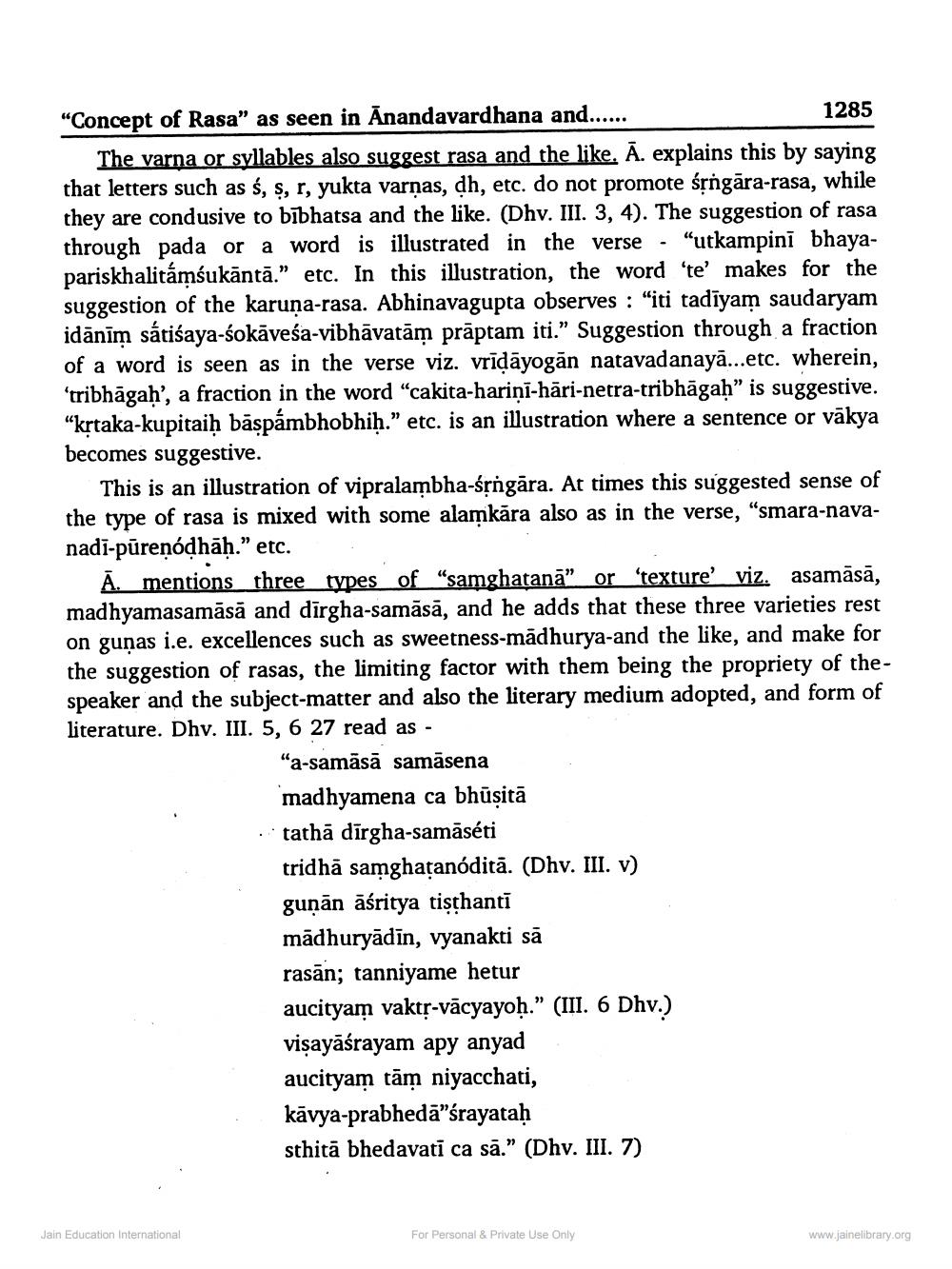________________
"Concept of Rasa” as seen in Anandavardhana and.....
1285 The varna or syllables also suggest rasa and the like. Ā. explains this by saying that letters such as ś, s, r, yukta varnas, dh, etc. do not promote śpngāra-rasa, while they are condusive to bībhatsa and the like. (Dhv. III. 3, 4). The suggestion of rasa through pada or a word is illustrated in the verse. "utkampini bhayapariskhalitámśukāntā.” etc. In this illustration, the word 'te' makes for the suggestion of the karuna-rasa. Abhinavagupta observes : "iti tadīyam saudaryam idānīm sátiśaya-śokāveśa-vibhāvarām prāptam iti.” Suggestion through a fraction of a word is seen as in the verse viz. vridayogān natavadanayā...etc. wherein, 'tribhāgah', a fraction in the word “cakita-hariņi-hāri-netra-tribhāgah” is suggestive. “krtaka-kupitaiḥ bāspámbhobhiḥ.” etc. is an illustration where a sentence or vākya becomes suggestive.
This is an illustration of vipralambha-śrngāra. At times this suggested sense of the type of rasa is mixed with some alamkāra also as in the verse, "smara-navanadi-pūreņódhāḥ." etc.
Ā. mentions three types of “samghatanā” or 'texture' viz. asamāsā, madhyamasamāsā and dirgha-samāsā, and he adds that these three varieties rest on gunas i.e. excellences such as sweetness-madhurya-and the like, and make for the suggestion of rasas, the limiting factor with them being the propriety of thespeaker and the subject-matter and also the literary medium adopted, and form of literature. Dhv. III. 5, 6 27 read as -
"a-samāsā samāsena
madhyamena ca bhūșitā . tathā dīrgha-samāséti
tridhā samghatanóditā. (Dhv. III. v) guņān āśritya tisthantī mādhuryādīn, vyanakti sā rasān; tanniyame hetur aucityam vaktp-vācyayoḥ.” (III. 6 Dhv.) viṣayāśrayam apy anyad aucityam tām niyacchati, kāvya-prabhedā”śrayataḥ sthitā bhedavati ca sā.” (Dhv. III. 7)
Jain Education International
For Personal & Private Use Only
www.jainelibrary.org




